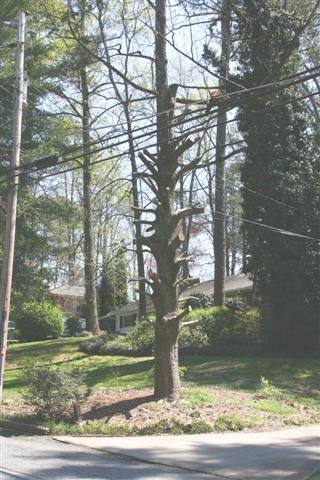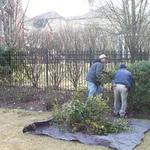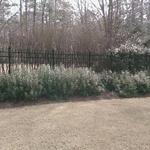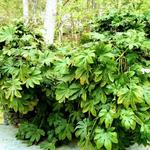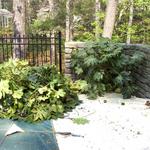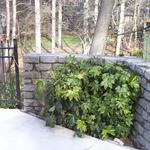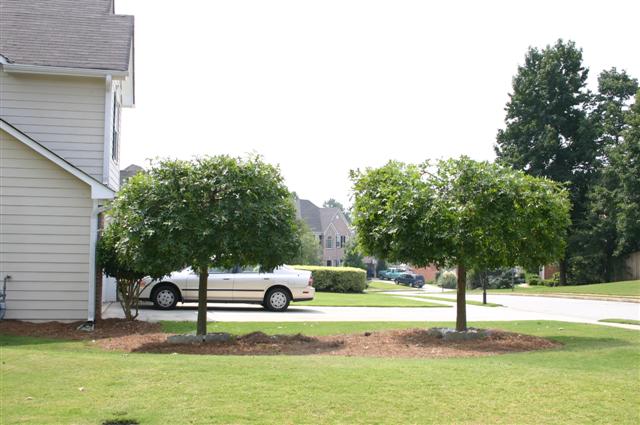Atlanta Pruning and Landscape Service Company
678-445-1495
PRUNING
A tree may need pruning for a variety of reasons:
- To remove diseased or storm-damaged branches
- To thin the crown to permit new growth and better air circulation
- To reduce the height of a tree
- To remove obstructing lower branches
- To shape a tree for design purposes
Once the decision has been made to prune, your next decision is whether or not to tackle the job yourself. In the case of a large tree where you want to remove big branches in the upper area of the crown, it may be best to hire experts. Large tree pruning, in particular, can require climbing and heavy saws or even cherry-pickers and chain saws. This is a job that should be left to trained and experienced professionals which is not in our scope of work. However, we are more than happy to refer you to a professional tree company. Never compromise personal safety in pruning a tree.
Ornamental trees and shrubs require specific pruning techniques which should be handled by a professional pruner. Incorrect pruning methods will jeopardize the integrity and life span of the tree or shrub.
SERVICES
This was a Southern Magnolia, now it's a totem pole.
Plants have been in existence for millions of years and man has been around for less than 100,000 years. Prior to our arrival and the domestication of plants, pruning was never done. Therefore, pruning is a human activity done primarily for our needs and not necessarily for those of the plant. I envision the first active pruning being that of a caveman pulling a dead limb from a tree for fire wood. For the most part, plants don't need pruning. They can shed problem parts very well on their own. However, since the questions surrounding pruning can be challenging and usually make up nearly half of the questions sent to us, I will cover the basics here by plant group: herbaceous (perennials and annuals), shrubs, trees and conifers as a separate group.
There are dozens of web sites and books dedicated to proper practices of pruning. In order to keep this article in check, links will be provided where necessary.
There are two guidelines that supersede the more specific guidelines below.
First, always use the correct tool for the job: hand pruners, loppers, pole saw, hand saw or chainsaw. Make sure the tool is sharp, in proper working condition and that you know how to correctly use it.
Second, you can prune at any time of year those parts of a plant that I call the four D's: Dead, Dying, Diseased or Damaged.
BASIC GUIDELINES
PRUNING HERBACEOUS PLANTS
PRUNING SHRUBS
Azalea Rejuvenation - Before and After
Stage one: Azalea Rejuvenation
1 Year after rejuvenation
Fatsia Rejuvenation - Before and After
Before Rejuvenation
1 Year after rejuvenation
Fatsia rejuvenation
PRUNING TREES
Phone: 678.445.1495 | Email: info@pruningguru.com
Designed by The Pruning Guru, Inc. © 2011
The Pruning Guru would like to hear from you. Please complete the information below and we will get back to you within 24 hours.
Herbaceous plants are usually perennials or annuals in that they will either die back to the roots or completely die at the end of the growing season. Pruning on these is often labeled as follows:
- Deadheading: removing spent flowers to eliminate seed production and/or encourage additional blooms.
- Pinching: cutting back the plant to encourage thicker growth.
- Tidying: removing unsightly foliage and/or shaping.
- Clearing: removing the top growth after frost (perennials) or removing the dead plant (annuals).
Herbaceous plants produce blooms on the current season's growth, so pruning can be done either at the end of the previous season, or as new growth appears early in the season or as needed during the growing season.
The pruning of shrubs can be a bit more tricky and therefore, I divide shrubs into broadleaf evergreens (excluding conifers) and flowering. Of course, there is overlap in these two groups.
How Much?
Healthy shrubs can often take a severe pruning, if it isn't done too frequently. In fact, some shrubs benefit from a "rejuvenation" pruning done every few years if they become leggy or misshapen. I find this works well on broadleaf evergreens such as boxwoods, hollies, Loropetalums and even azaleas. Other than that, it's advisable to not remove more than 25% of the total plant in a single pruning.
When?
For broadleaf evergreen plants whose sole purpose in the garden is the foliage (screening, etc.), most pruning should be done in the late winter (mid/late February for northern Georgia). The plants will leaf out shortly as spring approaches. A dose of fertilizer would be of benefit at this time, also.
The pruning of flowering shrubs is a bit more problematic. Blooming shrubs produce flowers either on the current season's growth (shrub roses, gardenias, crape myrtles, and some hydrangeas, etc.) or on the previous season's growth (azaleas, climbing roses, camellias, forsythia, and other hydrangeas, etc.). If you prune at the wrong time, you can either delay or destroy the next season's blooming cycle. As a general rule, if a shrub blooms before June 1, it more than likely blooms on the previous season's growth. After June 1 is a good indicator of blooming on the current season's growth but there can be some exceptions. When in doubt, prune just as the bloom is finishing.
Below are links that contain pruning tips for some of our more common shrubs:
- Shrub Roses
- Hydrangeas
- Azaleas & Rhododendrons
- Loropetalums
...and some additional information
As a Certified Arborist, nothing bothers me more than the improper pruning of trees. Since tree growth differs from shrubs (leaders, branches, etc.) and their growth rate is often slower, improper pruning of trees can permanently destroy the growth habit and lead to a weakened plant.
Once again there are several general rules that I apply to the pruning of trees:
1. Leave the pruning of large or high limbs to the professional companies with Certified Arborists on staff.
2. Never put anything on the pruning cuts. It only hinders the tree's ability to seal off the injury.
3. Never, ever top a tree. Any company that tops trees is unprofessional and engaged in a substandard practice.
These pin oaks were topped and will never grow correctly again.
How Much?
Once again, it's advisable to not prune more than 25% of a tree's canopy in a single pruning.
When?
For flowering trees as with shrubs, blooms are either produced on the previous or current season's growth and generally follow the same June 1 differentiation. However for most deciduous trees (flowering or not), pruning is best done in the winter (January) when the leaves are down and the architecture is easily seen. Just remember that with flowering trees such as cherries, redbuds and dogwoods, winter pruning will be removing some flower buds.
Tree Pruning Links:
PRUNING CONIFERS (NEEDLED EVERGREENS)
Whether they are trees or shrubs, I usually place my conifers in locations where pruning will not be necessary. Conifers are often slower growing and differ in their ability to regenerate after pruning. Some, such as yews, will sprout new growth near the pruning site. Many others, such as pines, arborvitaes and junipers lack dormant buds and won't germinate new growth on old branches or if pruned back beyond the needles. Conifers should never be severely pruned.
General maintenance - Narrowleaf evergreens are plants that have needles such as juniper, pine, cedar, spruce, and yew. Although some dwarf forms are available most cultivars require some pruning to control size, shape, and density. Maintenance pruning should be done to enhance the natural shape of the plant. The timing of selective pruning is less critical for narrowleaf evergreens since they are normally grown for their foliage and not for their flowers. They can be pruned in the winter and used for holiday decorations or pruned in early spring before new growth starts. A second light pruning (thinning and heading) is often done in late June to early July after new growth is completed. Long out-of-scale branches should be cut to a lateral or just above a vigorous side shoot on two- or three-year-old wood. Start at the top of the plant and work down removing branches that extend out and over lower shorter branches. Do not cut all branches back to the same length or the natural shape of the plant will be lost. Make pruning cuts so they will be hidden by an overlapping branch.
Many conifers, such as arborvitae, develop an area on the inside of the plant canopy that has little or no foliage. Green foliage should remain on branches that are cut back. Avoid cutting back to bare branches --- they seldom are able to develop new growth. Yews are the easiest conifer to prune. New growth will occur wherever cuts are made.
Pines are unique - buds for new growth occurs only on branch terminals. Pruning should be back to a branch or to the main trunk. An exception to this rule is in the spring when new shoots, which look like candles, develop. When the "candle" has extended about to its full length and the needles are still soft, remove about one-half the length of the candle.
Severe pruning - Narrowleaf evergreens are less tolerant of severe pruning than broadleaf evergreens. Most narrowleaf evergreens do not have dormant buds on old wood. Heavy pruning can kill most narrowleaf evergreens. If narrowleaf plants become too large for their location its best to remove them and replant.


